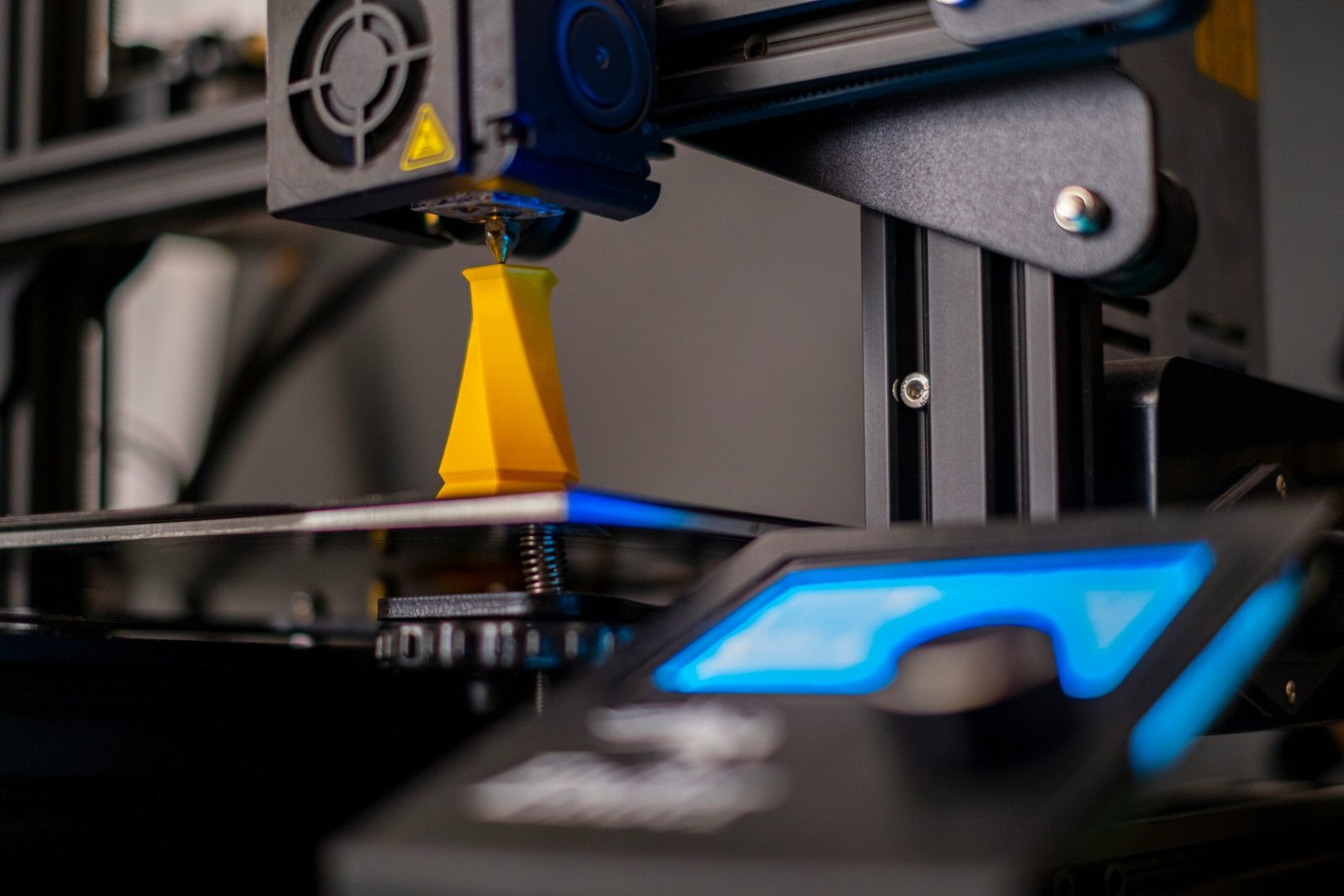Your cart is currently empty!

3D Printing 101: The Only Beginner’s Guide You Need
So you’ve decided to join the 3D printing world. Congratulations — welcome to the rabbit hole. Whether you’re here because you want to build your own Iron Man suit (good luck with that) or you just want to make a phone stand shaped like a dinosaur, this guide will walk you through everything you need to know to get started without losing your mind or your wallet.
Grab a coffee. This is going to be fun.
🧪 What Even Is 3D Printing?
At its core, 3D printing (or additive manufacturing if you’re THAT person…) is the process of creating a physical object layer by layer from a digital file. Instead of cutting away material like sculptors or traditional factories do, 3D printers add material bit by bit until the object is done. Think of it as reverse archaeology: you’re building the artifact, not uncovering it.
Imagine squeezing toothpaste onto a surface in the shape of a cat. Now imagine doing that thousands of times in perfectly calculated layers until you have a small cat statue. That’s 3D printing, minus the toothpaste and with slightly more science.
🖨️ Types of 3D Printing
There’s more than one way to summon an object from the digital void. Here are the main technologies beginners should care about:
• FDM (Fused Deposition Modeling): The most common and beginner-friendly. A spool of plastic filament is melted and laid down in layers. Cheap, cheerful, and perfect for hobby projects.
• SLA (Stereolithography): Uses liquid resin and lasers to create incredibly detailed prints. Messier, pricier, but amazing for miniatures and detailed models.
• SLS (Selective Laser Sintering): Uses powdered material and lasers. Industrial-grade, expensive, and definitely not for your first printer — unless you own a spaceship.
If this feels overwhelming, don’t panic. Ninety percent of beginners start with FDM printers, and they’re more than enough to keep you busy for years.
🧠 The Tools of the Trade
Here’s your basic starter pack:
• The Printer: The heart of your setup. Go for something reliable and beginner-friendly (like Creality Ender series or Prusa Mini). Avoid the ultra-cheap ones, they’re usually more “melted plastic spaghetti machines” than printers.
• Filament or Resin: Your building material. PLA is the go-to for beginners: it’s cheap, forgiving, and doesn’t stink up the house.
• Slicing Software: This converts your 3D model into instructions the printer can understand. Think of it as translating Shakespeare into robot-speak. Cura and PrusaSlicer are great free options.
• 3D Models: You can download pre-made models from sites like Printables or Thingiverse, or design your own using CAD software (but let’s be honest, start with downloading).
🛠️ The Process (It’s Simpler Than You Think)
1. Find or Design a Model: Start small. Like… really small. Maybe a keychain. Not a prosthetic arm.
2. Slice It: Load it into your slicer, choose your print settings (layer height, infill, speed), and let the software prepare it.
3. Print: Hit that glorious “Print” button and watch magic happen… slowly. (3D printing is a marathon, not a sprint.)
4. Post-Process: Once it’s done, remove any supports, sand if needed, and admire your creation.
5. Brag: The most important step. Post it online with the caption “just something I made.” Diva.
🧠 Tips From the Trenches
• Level your bed. If your print doesn’t stick, the problem is almost always bed leveling.
• Start with PLA. It’s like training wheels for filament.
• Don’t expect perfection. Your first few prints will look like a toddler’s art project. That’s normal.
• Join communities. Online forums and groups will save your sanity. Trust me.
🌍 What You Can Actually Make
Here’s where it gets exciting. Once you get the hang of it, you can make:
• Custom phone cases and tools
• Replacement parts for broken gadgets
• Educational models and prototypes
• Art, jewelry, cosplay props
• Entire drones fr
The limit isn’t the machine. It’s your imagination. And maybe the size of your print bed. Maybe not even that, if you wanna get creative and stretch the process a little.
🔮 Final Thoughts
3D printing isn’t just about making cool stuff (although that part is awesome). It’s about flipping the script on manufacturing. It’s about holding your ideas in your hands. Even if it’s literally a shout thought.
It’s tangible creativity. Engineering disguised as play.
And here’s the thing: it’s only going to get bigger. Homes, spacecraft components, organs, entire factories, we’re already 3D printing them. Starting now, even at the beginner level, puts you at the front of a technological revolution.
So print something stupid. Maybe print your cat (my brother actually printed our dog I kid you not). Because every single one of those prints is a step toward understanding the tools that will shape the future.
Now go melt some plastic and make something.
One response to “3D Printing 101: The Only Beginner’s Guide You Need”
-
You mention that avoiding the ultra-cheap printers can prevent the ‘melted plastic spaghetti machines’. What is the single most important feature (besides auto-leveling) a beginner should look for when choosing their first reliable printer?

Leave a Reply